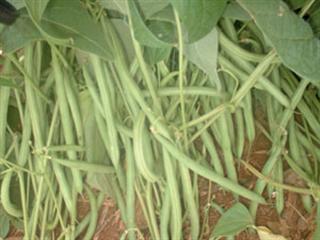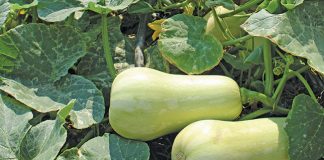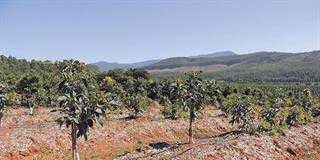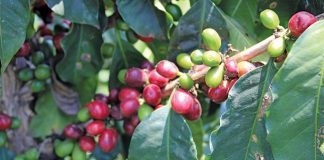
There are various reasons to grow your own vegetables. These include saving money, fresh and nutritious produce and the pleasure of planning for, and growing the vegetables. This has also been used as therapy to give patients a sense of responsibility. There is also the satisfaction derived from moving in a direction of self-sufficiency.
Nutritious and poor quality food may look the same, but home-grown produce is likely to have a higher mineral and phytonutrient content. The plant is only as good as the food it is given. If we can measure the huge benefits of well fertilised pastures on animal growth and health, the same will hold true for what we eat. Scientists in the US took samples of vegetables grown from the east of the country and the west. They used the same variety of vegetable and analysed the samples for food value.
The samples from the drier west were substantially more nutritious than those from the well-watered east. This was due to the rain leaching nutrients from the soil in the east over the years. Apart from this, and the mineral content, phytonutrients, enzymes and vitamins also reduced after harvest. For this reason, veggies should be consumed as soon as possible.
Getting started
When making your own vegetable garden, include manure which, apart from creating a healthy environment in the soil, also stimulates organisms that can extract a range of minerals from the clay. The manure itself also contains different minerals, far more than would be the case with artificial fertilisers. I prefer a mixture of cattle and poultry manure at a ratio of about 4:1.
In addition, you can also use sea products such as kelp extracts and fish emulsions which contain trace minerals not often found in our leached soils. With the amount of space available, calculate the value of each vegetable to your particular family. One of the considerations is the bearing period for each vegetable. Swiss chard can be harvested over a long period and, provided that your family likes this vegetable, it should be one of your first choices.
It takes up little space, but you also need to decide how much to plant to strike a happy balance. You don’t want an over-supply. This takes some planning and practise to get the formula right for your family. Keep records of planting dates, quantities planted and harvest dates. A diary is useful and will be most valuable for planning for the next season.
Beans
Spacing: Bush beans are planted at 8cm intervals in rows spaced 70cm apart.
Harvest: About 60 days.
Choose between the runner or bush type.
- The runner or climbers require a structure usually made of reeds, sticks or a trellis. They provide a steady quantity over a long period, making them more practical.
- The bush type takes two months and is in production for about a month or more. Pick young for more beans to follow and pick by placing the stem end of the bean between the thumb, index and forefinger, causing the pod to break next to the stem, thus saving an extra operation in the kitchen.
Broccoli
Spacing: 60cm x 30cm.
Harvesting: About 70 days.
This is truly a wonderful vegetable.

Use only F1 hybrid broccoli if you want good results.
- Most broccoli seed packets are open pollinated Green Sprouting Calabrese as it sprouts many small heads. I get many complaints from disgruntled growers expecting a big head and end up with many small ones. Rather look for an F1 hybrid, which will be ready about two months from transplanting. Side shoots develop from the stems which can also be harvested.
- The leaves can be harvested as spinach as a bonus.
- I also use the stems for juicing. For the best cancer-fighting nutrition, steam for 10 minutes.
Lettuce
Spacing: Plant about 15cm apart.
Harvesting: After 35 days you can start picking the bottom leaves.
Plant a mixture of different colours for effect.
- Don’t grow heading types as these are not suited for the home garden as they come and go too quickly and it is a case of feast or famine. The leaf types are more nutritious in any case. Pick the lower leaves as and when required. I plant every two months using this method which makes it easy and practical.
Beet
Spacing: Enough for a cluster to grow.
Harvesting: About 90 days.
This crop is rich in anti-oxidants which cleanse the body. Beet and Swiss chard are closely related and will cross with one another. I use such a cross for making juice mixed with carrots, apples, etc. The beet leaves should be cooked like spinach.
- Plant the beet about 6cm apart in the row but as each seed is a cluster of seeds, two or three plants may emerge from each. When thinned, the thinnings can be eaten as well. As the outer leaves are picked, the plants can become larger so leave wider gaps and plant every two months.
- Large beets are not marketed as they are perceived to be ‘over the wall’ but well-grown beet can still taste good.
Cabbage
Spacing: Row spacing of about 60cm with a space of 30cm between plants.
Harvesting: 45 to 90 days, depending on the variety.
This vegetable has gained a lot more appreciation since the cancer-fighting abilities of this group was discovered.
- Carefully plan how much to plant and preferably plant three varieties at a time. Perhaps a baby cabbage and Sugarloaf (Spitzkool) and a main season variety. This will prolong the harvest.
Leeks
Spacing: 8cm apart in 30cm rows.
Harvesting: 80 to 120 days, fully mature.
This vegetable is grossly underrated as a home garden vegetable. One of the reasons is that South Africans don’t know what to do with them other than make soup. They are delicious when cooked with a roast or even finely sliced in a salad.
- The advantage of leeks is that they can remain in the soil for extended periods and can be used from young to old.
Peppers and chillies

Peppers provide high value for the space occupied.
Spacing: About 30cm apart.
Harvesting: About 60 days.
These vegetables also use little space in the garden and are high value with an extended picking season for value and convenience.
Swiss chard
Spacing: 15cm apart in a row.
Harvesting: About 55 days.
- Swiss chard can be in production for most of the year in cool areas if protected with frost cover in winter.
- In subtropical areas it should rather not be planted in the hot, summer months.
- Plant about three times a year.
Carrots
Spacing: It does not matter whether the rows are 25cm apart or broadcast. What matters is that they are thinned to 50 to 80 plants per square metre.
Harvesting: About 80 to 100 days.

Carrots should be part of every homested garden and can be harvested over a lengthy period for convenience.
- This crop is practical as you can harvest over a long period from one sowing.
- The plants need the space for sufficient sunlight to produce the right size root.
- They can remain in the soil for much longer when maturing at the beginning of winter.
Tomatoes
Spacing: About 30cm apart in a row.
Harvesting: About 80 days.
Tomatoes offer both the convenience of harvesting over a long period and growing tasty varieties which are vine ripened.

Prune tomatoes to a single stem to make large, exposed trusses and slip over a section of stocking if birds are a threat.
- It is far more practical to grow indeterminate (tall) varieties which are easier to manage and are productive over a long period. These plants are tied to a stake or curled around some twine suspended from the eve of a roof or any other suitable structure. Remove all side shoots and only allow the tip to grow. This leaves an open plant which is much less vulnerable to disease and much easier to spray if this is required.
- A very good home garden variety is Hotstuff. This is a tasty, eelworm resistant hybrid which has excellent general health.
- A smaller fruited but productive variety is Moneymaker but it does not have disease resistance. The big problem is birds eating the ripe tomatoes. This can be overcome by slipping sections of stockings over the truss before it starts to ripen.
Contact Bill Kerr at [email protected]













